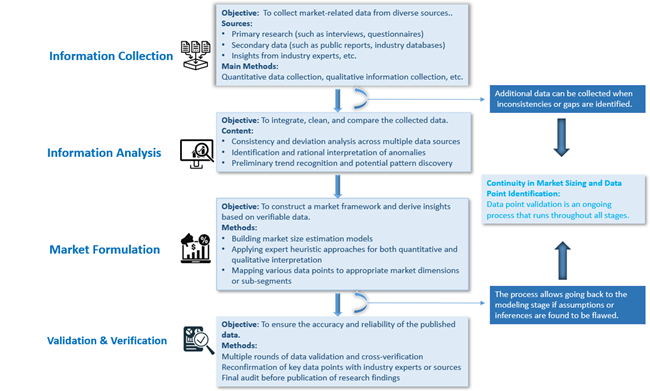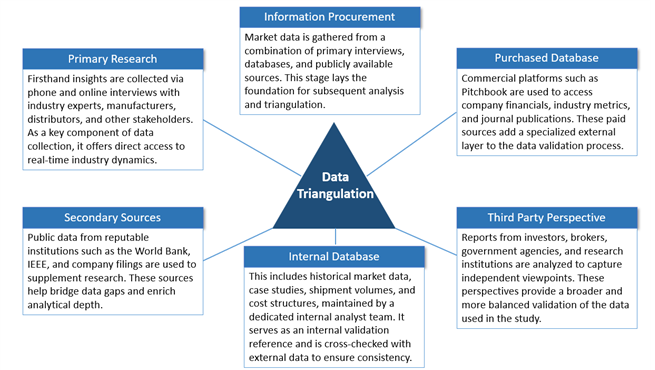Coater and Developer equipment, also known as “Track” systems, are used
in conjunction with lithography scanners during the photolithography process.
These systems include coaters, spin coaters, and developers that perform resist
coating, baking, and development. In early integrated circuit (IC)
manufacturing and lower-end semiconductor processes, such equipment was often
used offline. However, with increasing automation and capacity demands in IC
manufacturing, particularly on 200mm (8-inch) and larger production lines,
these systems are typically connected inline with lithography scanners to form
integrated wafer processing and lithography production lines, enabling precise
and automated photolithography workflows.
Track systems perform all photolithography steps except exposure. A
complete photolithography process involves eight sub-steps: dehydration baking
(vapor priming and adhesion promotion), spin coating, soft bake, exposure,
post-exposure bake, development, hard bake, and development inspection. The
scanner performs the exposure, while the Track handles all remaining steps.
The upstream of the Track equipment industry includes raw materials such
as sensors, non-ferrous metals, electronic components, filters,
instrumentation, and others. The midstream comprises the production and
manufacturing of Track equipment. The downstream applications primarily lie in
the semiconductor sector, covering wafer fabrication (photolithography
process), semiconductor packaging and testing (coating and developing), and
OLED manufacturing (photolithography).
Market Overview:
According to LookWhole Insight, the global Coater & Developer Equipment market is projected to reach USD 4570.44 Million in 2024. It is expected to grow to USD 9052.93 Million by 2033, registering a compound annual growth rate (CAGR) of 7.89% during the forecast period (2025–2033).
Core Technical Barriers in the Industry
1. Film Thickness Control
The precision of film thickness is closely related to the performance of the resist pump, involving both hardware reliability and software control. For example, whether the pump’s process menu is robust and effective depends heavily on the experience of the process engineer. Thus, film thickness control is a combined result of hardware and human expertise. Using high-precision foreign-made pumps with experienced engineers usually solves this challenge.
2. Yield
Yield is determined by particle control, defect management, and Critical Dimension Uniformity (CDU).
(1) Dry particles usually result from poor internal environmental control. Airflow design within the equipment ensures airborne particles don’t settle on the wafer. Many domestic suppliers lack this airflow design concept, especially those transitioning from back-end packaging equipment, making particle control difficult.
(2) Wet particles are related to liquid systems. The choice of pipeline materials and presence of a self-cleaning mechanism significantly impact yield.
(3) Defects and CDU are directly tied to particle control and process design. CDU control is also affected by bake plate uniformity. Therefore, defect suppression, particle control, process flow design, and CDU are all interrelated in a tightly linked logic chain.
3. Productivity (WPH)
A major bottleneck lies in the miniaturization of robotic arms. Large robotic arms reduce the number that can be housed in a tool, limiting throughput. Additionally, there's a tradeoff between speed and contamination: faster movements increase particle contamination, while slowing down reduces throughput. Balancing these factors is a major challenge for domestic manufacturers.
4. System Reliability (Uptime)
The quality of system components directly impacts operational stability. Low localization levels of components can lead to frequent failures. Moreover, mature software scheduling is essential. If the system software is buggy or underdeveloped, it can lead to unexpected downtime. Many domestic companies still rely on foreign-developed core software, limiting autonomy and control.
Key Development Trends
Infrared (IR) and ultraviolet (UV) missile warning systems each have their own advantages. However, relying on a single detection method often limits the effectiveness of target detection. To reduce false alarm rates and improve early warning efficiency, dual-band UV-IR missile warning has emerged as a promising solution. As a new approach to missile detection and tracking, it plays a vital role in enhancing modern missile defense systems.
Global Coater & Developer Equipment Market: Competitive Landscape
The semiconductor equipment industry is highly capital- and technology-intensive with oligopolistic market structure. As a core piece of front-end lithography, Coater & Developer systems are technically complex and have long been monopolized by TEL (Tokyo Electron).
Key Players: Tokyo Electron (TEL)
TEL holds a dominant position in the global Track equipment market. Its CLEAN TRACK LITHIUS system is the only one supporting 10nm and below process nodes, making it standard across all leading-edge fabs.
From 2017 to 2023, TEL maintained ~90% market share in coater/developer systems, and 100% share in inline EUV Track tools, establishing a near-monopoly.
TEL has released three main product lines:
CLEAN TRACK Mark (1st generation, now retired)
CLEAN TRACK ACT (supports 200/300mm wafers but is gradually being phased out due to lower throughput)
CLEAN TRACK LITHIUS (current flagship, compatible with EUV, throughput up to 300 WPH)
From 2012 to 2022, over 2000 LITHIUS units were shipped, including over 140 LITHIUS Pro Z systems for EUV applications.
Report Framework and Key Highlights:
Market Dynamics: Identification of major market drivers, restraints, opportunities, and challenges.
Trend Analysis: Examination of ongoing and emerging trends impacting the market.
Competitive Landscape: Detailed profiles and market positioning of major players, including market share, operational status, product offerings, and strategic developments.
Strategic Analysis Tools: SWOT Analysis, Porter’s Five Forces Analysis, PEST Analysis, Value Chain Analysis
Market Segmentation: By type, application, region, and end-user industry.
Forecasting and Growth Projections: In-depth revenue forecasts and CAGR analysis through 2033.
This report equips readers with critical insights to navigate competitive dynamics and develop effective strategies. Whether assessing a new market entry or refining existing strategies, the report serves as a valuable tool for:
Industry players
Investors
Researchers
Consultants
Business strategists
And all stakeholders with an interest or investment in the Coater & Developer Equipment market.
Global Coater & Developer Equipment Market: Segmentation Analysis and Strategic Insights
This section of the report provides an in-depth segmentation analysis of the global Coater & Developer Equipment market. The market is segmented based on region (country), manufacturer, product type, and application. Segmentation enables a more precise understanding of market dynamics and facilitates targeted strategies across product development, marketing, and sales.
By breaking the market into meaningful subsets, stakeholders can better tailor their offerings to the specific needs of each segment—enhancing competitiveness and improving return on investment.
Global Coater & Developer Equipment Market: Market Segmentation Analysis
The research report includes specific segments by region (country), manufacturers, Type, and Application. Market segmentation creates subsets of a market based on product type, end-user or application, Geographic, and other factors. By understanding the market segments, the decision-maker can leverage this targeting in the product, sales, and marketing strategies. Market segments can power your product development cycles by informing how you create product offerings for different segments.
|
ATTRIBUTE |
Details |
|
|
Time Coverage |
Historical Year: 2020– 2024 Base Year: 2024 Estimated Year: 2025 Forecast Year: 2025 - 2033 |
|
|
Market Segmentation |
||
|
By Type |
Coating Equipment Developer Equipment Hybrid Systems Support Equipment |
|
|
By Application |
Automotive Aerospace Construction Industrial Others |
|
|
By Company |
Tokyo Electron (TEL) Dai Nippon Screen (DNS) Kingsemi CND ACM Research ASMPT Limited Mai Ruijie (Nanjing) Semiconductor ELS System SCREEN Semiconductor SUSS MicroTec Others |
|
|
By Region |
North
America |
|
Report Framework and Chapter Summary
Chapter 1: Report Scope and Market Definition
This chapter outlines the statistical boundaries and scope of the report. It defines the segmentation standards used throughout the study, including criteria for dividing the market by region, product type, application, and other relevant dimensions. It establishes the foundational definitions and classifications that guide the rest of the analysis.
Chapter 2: Executive Summary
This chapter presents a concise summary of the market’s current status and future outlook across different segments—by geography, product type, and application. It includes key metrics such as market size, growth trends, and development potential for each segment. The chapter offers a high-level overview of the Coater & Developer Equipment Market, highlighting its evolution over the short, medium, and long term.
Chapter 3: Market Dynamics and Policy Environment
This chapter explores the latest developments in the market, identifying key growth drivers, restraints, challenges, and risks faced by industry participants. It also includes an analysis of the policy and regulatory landscape affecting the market, providing insight into how external factors may shape future performance.
Chapter 4: Competitive Landscape
This chapter provides a detailed assessment of the market's competitive environment. It covers market share, production capacity, output, pricing trends, and strategic developments such as mergers, acquisitions, and expansion plans of leading players. This analysis offers a comprehensive view of the positioning and performance of top competitors.
Chapters 5–10: Regional Market Analysis
These chapters offer in-depth, quantitative evaluations of market size and growth potential across major regions and countries. Each chapter assesses regional consumption patterns, market dynamics, development prospects, and available capacity. The analysis helps readers understand geographical differences and opportunities in global markets.
Chapter 11: Market Segmentation by Product Type
This chapter examines the market based on product type, analyzing the size, growth trends, and potential of each segment. It helps stakeholders identify underexplored or high-potential product categories—often referred to as “blue ocean” opportunities.
Chapter 12: Market Segmentation by Application
This chapter analyzes the market based on application fields, providing insights into the scale and future development of each application segment. It supports readers in identifying high-growth areas across downstream markets.
Chapter 13: Company Profiles
This chapter presents comprehensive profiles of leading companies operating in the market. For each company, it details sales revenue, volume, pricing, gross profit margin, market share, product offerings, and recent strategic developments. This section offers valuable insight into corporate performance and strategy.
Chapter 14: Industry Chain and Value Chain Analysis
This chapter explores the full industry chain, from upstream raw material suppliers to downstream application sectors. It includes a value chain analysis that highlights the interconnections and dependencies across various parts of the ecosystem.
Chapter 15: Key Findings and Conclusions
The final chapter summarizes the main takeaways from the report, presenting the core conclusions, strategic recommendations, and implications for stakeholders. It encapsulates the insights drawn from all previous chapters.
About US
LookWhole Insight is a global leader in data analytics and market research, offering deep insights into industries, economies, and consumer behavior across the world. We deliver comprehensive data and analysis on thousands of products and services, making us the first choice for organizations pursuing growth and exploring untapped, blue ocean markets.
Our offerings include syndicated research reports, customized research solutions, and strategic consulting services. The LookWhole Insight database is trusted by prestigious academic institutions and Fortune 500 companies alike, providing a robust foundation to navigate both global and regional business environments. Our data spans 26 industries across 35 key economies, backed by thousands of metrics and detailed analyses.
As an independent provider of global business intelligence, we empower clients with market analysis and consumer insights that range from local to global, and from tactical to strategic. Our research solutions guide critical decisions on when, where, and how to scale your business with confidence.
Email: market@lookwhole.com
www.lookwholeinsight.com






